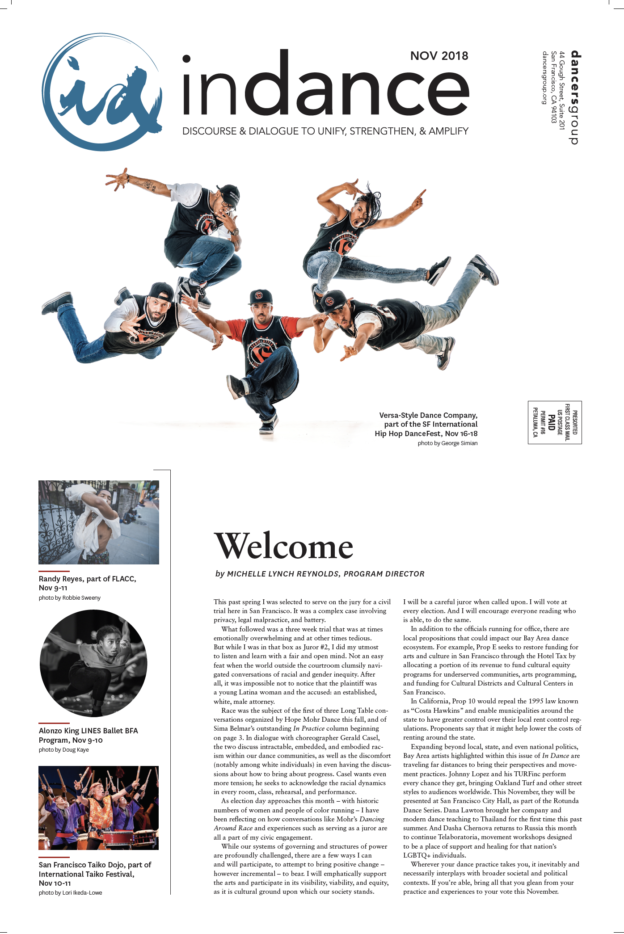This past spring I was selected to serve on the jury for a civil trial here in San Francisco. It was a complex case involving privacy, legal malpractice, and battery.
What followed was a three week trial that was at times emotionally overwhelming and at other times tedious. But while I was in that box as Juror #2, I did my utmost to listen and learn with a fair and open mind. Not an easy feat when the world outside the courtroom clumsily navigated conversations of racial and gender inequity. After all, it was impossible not to notice that the plaintiff was a young Latina woman and the accused: an established, white, male attorney.

Race was the subject of the first of three Long-Table conversations organized by Hope Mohr Dance this fall, and of Sima Belmar’s outstanding In Practice column beginning on page 3. In dialogue with choreographer Gerald Casel, the two discuss intractable, embedded, and embodied racism within our dance communities, as well as the discomfort (notably among white individuals) in even having the discussions about how to bring about progress. Casel wants even more tension; he seeks to acknowledge the racial dynamics in every room, class, rehearsal, and performance.
As election day approaches this month – with historic numbers of women and people of color running – I have been reflecting on how conversations like Mohr’s Dancing Around Race and experiences such as serving as a juror are all a part of my civic engagement.
While our systems of governing and structures of power are profoundly challenged, there are a few ways I can and will participate, to attempt to bring positive change – however incremental – to bear. I will emphatically support the arts and participate in its visibility, viability, and equity, as it is cultural ground upon which our society stands. I will be a careful juror when called upon. I will vote at every election. And I will encourage everyone reading who is able, to do the same.
In addition to the officials running for office, there are local propositions that could impact our Bay Area dance ecosystem. For example, Prop E seeks to restore funding for arts and culture in San Francisco through the Hotel Tax by allocating a portion of its revenue to fund cultural equity programs for underserved communities, arts programming, and funding for Cultural Districts and Cultural Centers in San Francisco.
In California, Prop 10 would repeal the 1995 law known as “Costa Hawkins” and enable municipalities around the state to have greater control over their local rent control regulations. Proponents say that it might help lower the costs of renting around the state.
Expanding beyond local, state, and even national politics, Bay Area artists highlighted within this issue of In Dance are traveling far distances to bring their perspectives and movement practices. Johnny Lopez and his TURFinc perform every chance they get, bringing Oakland Turf and other street styles to audiences worldwide. This November, they will be presented at San Francisco City Hall, as part of the Rotunda Dance Series. Dana Lawton brought her company and modern dance teaching to Thailand for the first time this past summer. And Dasha Chernova returns to Russia this month to continue Telaboratoria, movement workshops designed to be a place of support and healing for that nation’s LGBTQ+ individuals.
Wherever your dance practice takes you, it inevitably and necessarily interplays with broader societal and political contexts. If you’re able, bring all that you glean from your practice and experiences to your vote this November.
This article appeared in the November 2018 edition of In Dance.

